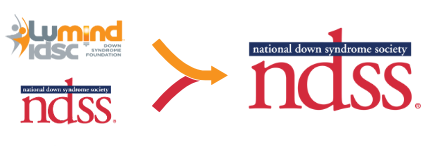There is a quote from author Lance Conrad that states, “I can imagine no heroism greater than motherhood.” For Cristina Rothfuss, a mother of four, navigating a rare condition to receive an eventual diagnosis for her youngest child was no small feat. Using her hero skills of advocacy, teamwork, and patience, Cristina eventually found a diagnosis and treatment plan for her daughter.
Avery, a nine-year-old with Down syndrome from upstate New York, had been making steady progress in school through kindergarten. Her communication skills were coming along; she was using her sign language skills and adaptive device to indicate her needs and her attention span was improving. By all accounts, Avery was making progress toward her goals.
That all changed after a horrible case of hand, foot, and mouth disease (HFMD). Avery recovered from the infection, however, she never fully bounced back to being herself. Cristina noticed Avery was not using her sign language skills as well as she had before the infection. She also seemed unable to focus and concentrate on tasks that she had previously mastered. Avery was also in perpetual motion; she could not sit still. These differences were in direct contrast to the progress that Avery had already made. Cristina began to think something was not quite right.
“As a parent, my goal is for Avery to be her best self,” explains Cristina. “I want her to be the best she can be medically, educationally, and socially.”
Cristina reached out to make an appointment with Avery’s developmental pediatrician. After that appointment, Cristina had a potential name for what Avery was experiencing. There is an extensive checklist, but Avery was showing signs of something called Down Syndrome Regression Disorder (DS-RD).
Down Syndrome Regression Disorder has been documented since the 1940s, however, it is only in the last decade that more focus has been given to defining criteria for diagnosis and treatment options. Potential causes for this disorder include psychological stress or immune system malfunction. The onset of this disorder typically occurs between the early adolescent to young adulthood phase. Avery was young, but she fit some of the symptoms. It was decided that more testing was needed for an official diagnosis.
Avery then underwent a series of tests including bloodwork, an MRI, an EEG (electroencephalogram) to measure electrical activity in the brain, and a spinal tap to collect spinal fluid for analysis. After over a year of tests, Avery’s official diagnosis was made. In December 2023, Avery was indeed diagnosed with Down Syndrome Regression Disorder. A treatment plan was put into motion, and Avery began receiving immunoglobulin therapy (IVIG) to help treat her disorder. So far, Cristina and Avery’s school teachers have seen slow but steady progress. Avery is becoming more attentive and aware of her surroundings, has increased eye contact, and has even increased her strength and stamina. Avery still has a way to go in her treatment, however, the improvements already seen are a good sign.
Finding solutions to medical challenges can at times be like solving a puzzle. Cristina’s advocacy and partnership with Avery’s medical care team ultimately led to a diagnosis and treatment plan, ensuring Avery is on the path to becoming her best self.
Learn more about Down Syndrome Regression Disorder:
Unexplained Regression in Down Syndrome Podcast with Dr. Stephanie Santoro
